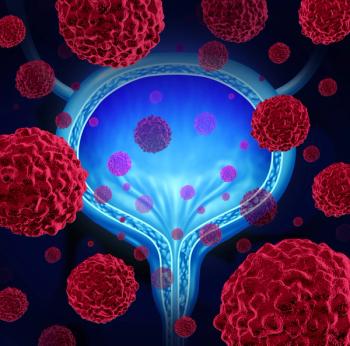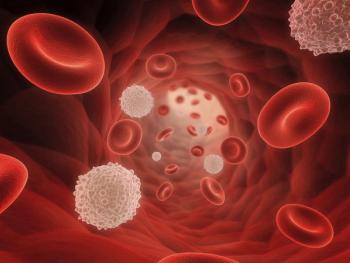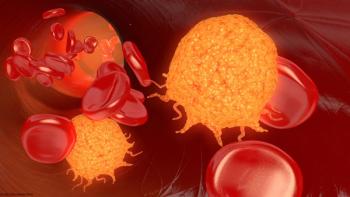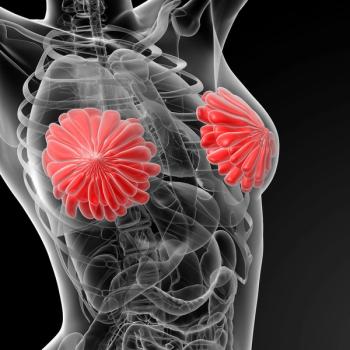
Oncology NEWS International
- Oncology NEWS International Vol 10 No 5
- Volume 10
- Issue 5
Topoisomerase I Investigations Aim to Improve Chemotherapy
PISCATAWAY, New Jersey-Three aspects of topoisomerase I are currently under intensive investigation by researchers hoping to improve cancer chemotherapy: the mechanism of topoisomerase I poisoning, cellular processing and repair, and mechanisms of resistance to topoisomerase I inhibitors. These issues were reviewed at the Vanderbilt University Symposium by Leroy F. Liu, PhD, who heads the Department of Pharmacology, University of Medicine and Dentistry of New Jersey-Robert Wood Johnson Medical School, in Piscataway.
PISCATAWAY, New JerseyThree aspects of topoisomerase I are currently under intensive investigation by researchers hoping to improve cancer chemotherapy: the mechanism of topoisomerase I poisoning, cellular processing and repair, and mechanisms of resistance to topoisomerase I inhibitors. These issues were reviewed at the Vanderbilt University Symposium by Leroy F. Liu, PhD, who heads the Department of Pharmacology, University of Medicine and Dentistry of New Jersey-Robert Wood Johnson Medical School, in Piscataway.
Dr. Liu described some of the many possible mechanisms of topoisomerase I poisoning. These include:
Enzyme/DNA binders such as camptothecin
DNA binders such as actinomy- cin D, protoberberines, and terbenzimidazoles
Enzyme modification such as T722A creation of mutations in topoisomerase I
DNA modification such as abasic sites, base mismatches, benzo[a]pyrene-DNA adducts, or araC-substituted DNA
Dr. Liu said that studies of human xenografts in animal models show that camptothecins are more effective than other drug classes at inducing complete responses in solid tumors. "However, in the clinic the results are not so dramatic," he said. New derivatives such as silatecan and homocamptothecin have been developed to address this problem, which is thought to be related in part to interactions with human serum albumins.
Dr. Liu said that the topoisomerase-I cleavable complexes produced by camptothecins are reversible, so that a cellular process (eg, DNA replication and RNA transcription) must occur to produce permanent damage.
‘Fork Collision Model’
Many experts believe that topoisomerase I inhibitors ultimately cause tumor cell damage by the process described as the "fork collision model."
"The replication fork is one of the major events that processes this complex into a double-strand break," Dr. Liu said. "Upon the collision, the 5' hydroxyl end is displaced away from the active site and the broken end of the now irreversible complex is available for cellular recognition. In addition to DNA replication, RNA transcription can also process the reversible topoisomerase cleavable complexes into protein-linked DNA strand breaks. This event probably triggers destruction of the topoisomerase cleavable complex.
Cellular Processing Pathways
There are two pathways for cellular processing of the complex: the small ubiquitin-related modifier (SUMO/UBC9) pathway and the ubiquitin/26S proteasome pathway. The topoisomerase I cleavable complexes are SUMO-conjugated "within moments," according to Dr. Liu.
"In the presence of camptothecins, you trap the cleavable complex, which is rapidly SUMO-lated and then destroyed. If you block transcription, this destruction does not occur. The transcription collision reveals the potentially lethal strand break. In order to repair this damage, the cell uses its machinery to destroy topoisomerase I, then cellular repair mechanisms can come into action," Dr. Liu said.
Dr. Liu concluded that topoisomerase I cleavable complexes can be converted into DNA lesions by either DNA replication, RNA transcription, or other cellular processes, and that topoisomerase I cleavable complexes are modified by SUMO and ubiquitin. "Topoisomerase I down-regulation is a new resistance mechanism to camptothecins," he said.
Articles in this issue
over 24 years ago
Adjuvant Chemo Dose Reductions Frequent in Breast Cancerover 24 years ago
Women May Be at Greater Risk for Undertreatment of Cancer Painover 24 years ago
Umbilical Cord Blood in Adult Leukemia Patientsover 24 years ago
Irinotecan Results Continue to Be Encouraging in Colorectal Cancerover 24 years ago
Irinotecan Active in Pediatric Cancersover 24 years ago
Ultrasound Contrast Agents Help Diagnose Prostate Cancerover 24 years ago
Optimal Use of Irinotecan Still to be Determinedover 24 years ago
Groups Urge Federal Action Against Eclipse Cigarettesover 24 years ago
Potential Advantages of Oral Irinotecan Defined in Phase I StudiesNewsletter
Stay up to date on recent advances in the multidisciplinary approach to cancer.

















































































